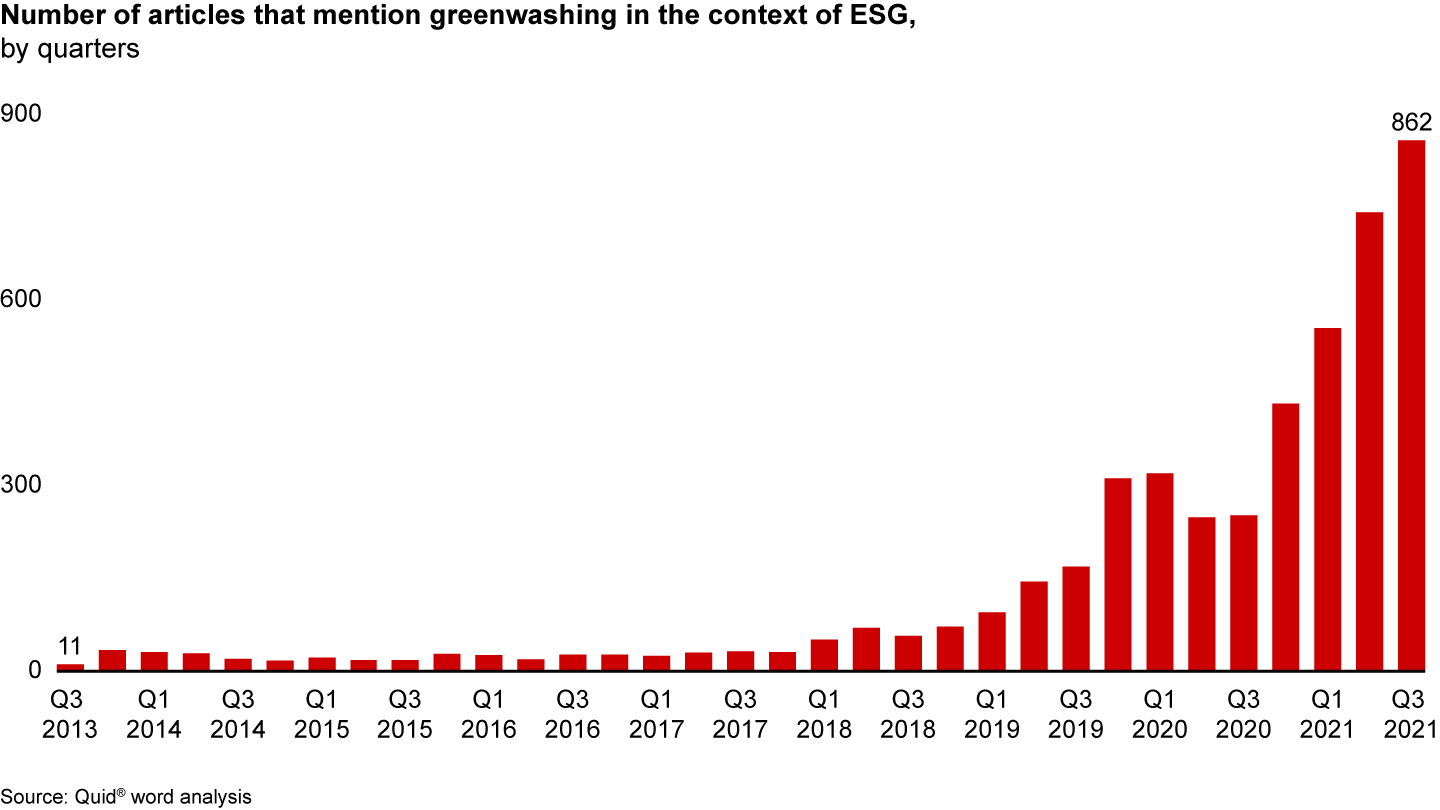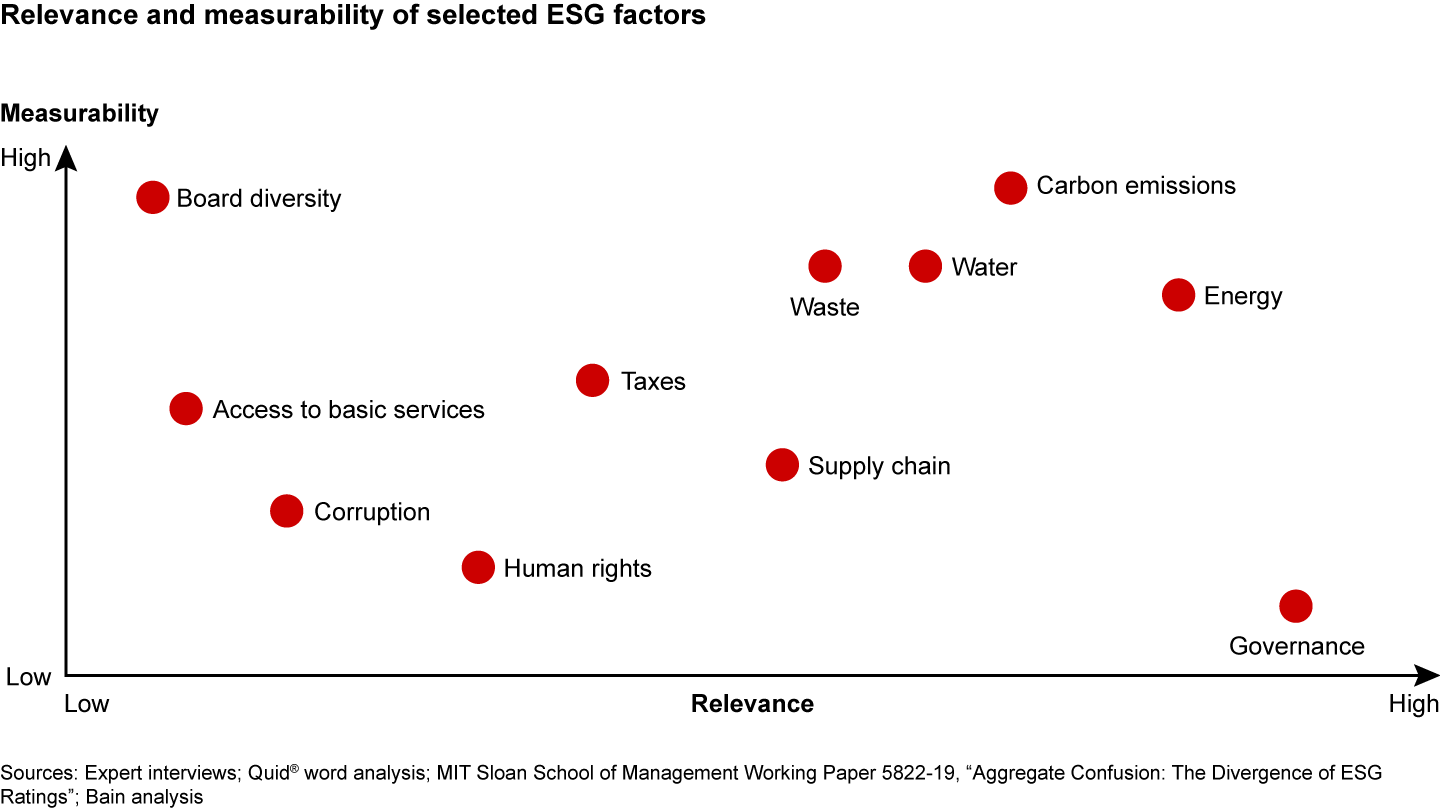Etude

En Bref
- As investors get more sophisticated about environmental, social, and governance (ESG) matters, they’ve also grown more skeptical about asset managers’ claims on sustainable products.
- Defining the measurable impact of a particular investment on ESG factors has become critical to the business, yet there’s a dearth of standard ESG metrics or clear methods to quantify impact.
- Therefore, asset and wealth managers should develop capabilities to quantify and report the impact of a given asset on a select set of ESG factors that matter most to their high-value customers.
Asset and wealth managers find it increasingly difficult to carve out an ESG strategy that will appeal to investors. As investors and the broader public get more sophisticated about ESG matters, they are questioning the claims of commitment to sustainably invested assets and ostensibly sustainable products.
With the growing demand for ESG-compliant assets, more investors are concerned that their fund and wealth managers are only paying lip service to these themes. The ambition to stake out ESG-friendly territory may have even led some well-intentioned companies to overstate their actual commitments, Bain analysis shows, or at least push the boundaries of what investments could be considered sustainable (see Figure 1). At the same time, the number of business press articles on greenwashing—conveying a misleading impression about how an asset is environmentally sound—has soared at a 147% compound annual growth rate over the past three years (see Figure 2).




Marketing efforts may miss the essence of sustainable finance, which boils down to acting with intention and measuring the effect of those actions. This situation stems in part from the lack of common reporting and audit standards—there is simply too much room for interpretation of “sustainable” investments. Elusive regulations and standards don’t help either. A portfolio manager could do every possible thing to focus on ESG and still be told that not enough has been done—or that what has been done doesn’t satisfy important stakeholders.
It’s a pressing problem for asset management firms. By 2030, we would argue, the measurable impact of investment on ESG factors will hold a similar level of importance to financial return and risk level, thereby complementing the traditional risk-return approach. Clients deserve solid information on progress in the ESG component in question, such as reduction of carbon emissions or water usage, enhancement of employee diversity, or transparency of governance.
Fund managers can’t ignore this push for information because the demand for ESG-related assets will only continue to expand as evidence accumulates of superior financial performance. Public companies with top ESG ratings, for example, tend to show higher than average multiples, suggesting the imbalanced demand/supply for ESG assets.
However, the growth of ESG-linked investments is running into limitations because of a dearth of standard metrics and the opaque methods used to derive ratings. There are no global standards in ESG reporting, so ratings remain inconsistent, with the number of ESG factors used to derive them ranging from about 40 to 280, depending on the sponsor of the data set. Moreover, established ESG ratings hardly allow for customizable evaluations at scale and rarely support thematic strategies. Many companies have thus developed their own methodologies, given these shortcomings.
Asset owners and investors also assign different relevance to specific ESG factors, with the greatest attention paid to environmental factors and governance; social factors tend to be less relevant (see Figure 3). While governance in general is highly relevant, it’s difficult to pin down at the specific factor level. In practice, ESG factor measurability also varies widely, with some factors more easily measured—a key consideration for asset and wealth managers when prioritizing which factors to emphasize.


New capabilities, new models
Given the state of ESG definition and tracking, asset and wealth managers should start developing capabilities to quantify and report the impact of a given asset on a selected set of ESG factors. It’s prudent for firms to prioritize a handful of such factors, perhaps five or so, where they can focus and offer impact reporting for investors. Other selected factors may matter to a small number of high-value clients, so additional capabilities could be developed in house or by partnering with specialized firms to develop reliable indices.
Most investors, for instance, rank carbon dioxide emissions as an important issue, a factor that is also relatively easy to measure. One way to quantify its impact comes from Persefoni, which uses its Carbon Management and Accounting Platform to measure and report emission reductions on both a portfolio and individual company level. The platform ingests data from thousands of potential sources and completes the required carbon calculations for different disclosure and reporting purposes.
Incorporating a robust ESG perspective will require predicting causality on an ESG factor at scale, and the most effective way to do this combines an artificial intelligence-infused model, which sifts through massive amounts of data, with a review by human experts to tease out causation vs. correlation. This person and machine combination could enhance the reliability of results and allow firms to tailor client-specific investments at scale.
No single model will work best for every firm, though—rather, each firm should define its offerings according to client preferences. Because it’s not practical to specialize in dozens of ESG factors, asset and wealth managers should focus on those factors that the majority of their clients feel strongest about. For the other factors, fund managers could consider outsourcing to specialist firms that assemble a respective basket of assets (related to, for example, anti-corruption measures, human rights, or biodiversity) and can reliably report the impact on that factor.
Greenwashing might sound benign, but it can confuse investors and prevent them from supporting truly meaningful ESG initiatives. With more ESG marketing claims questioned by clients, asset and wealth management firms can no longer tout ESG without convincing evidence. The solution to this strategic challenge lies in prioritizing ESG factors for specific target clients and building an operating model that reliably quantifies the impact on those factors. Only then will fund managers be able to differentiate themselves and carve out a stronger, enduring position in the market—and move from marketing to real results.